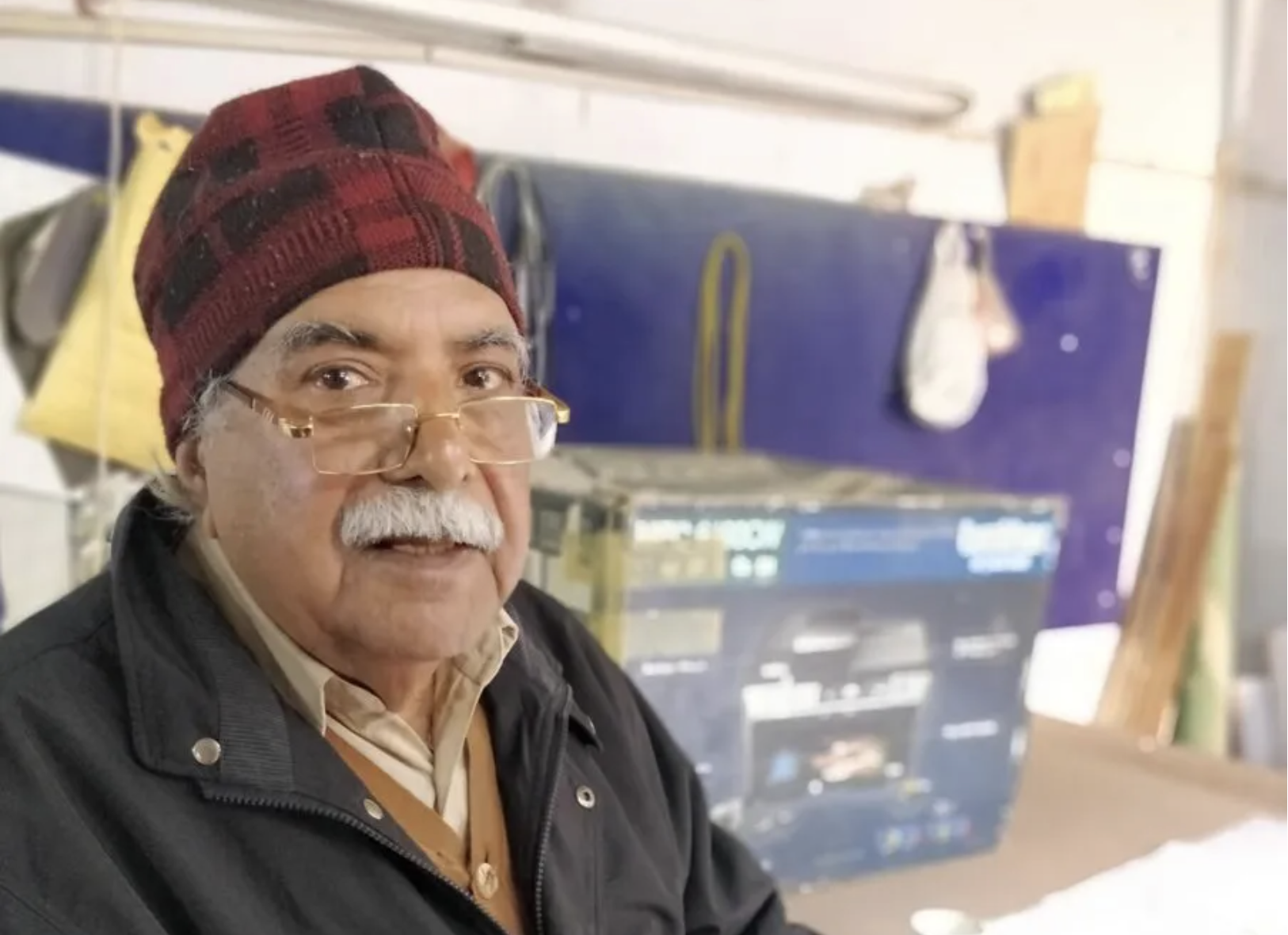The ‘model’ Model Maker
हिंदी अनुवाद के लिए यहाँ क्लिक करें
For the Delhi architects of the 80s and 90s, Kirori Mal is a familiar name. The go-to model maker for the architectural models of students and professional firms alike was interviewed by Architect Anupam Bansal and ArchitectureLive! Team. Nearly 1-½ years of incessant interviews later, we manage to bring to light the story behind this craftsman whose passion for the craft of model making and eye for detail contributed to the art of Architectural Model Making. An inspiring passion for model making and love for mo-bikes and whiskey- shared conversations and anecdotes led us to uncover several amusing details about the man behind models of the Architecture Masters.
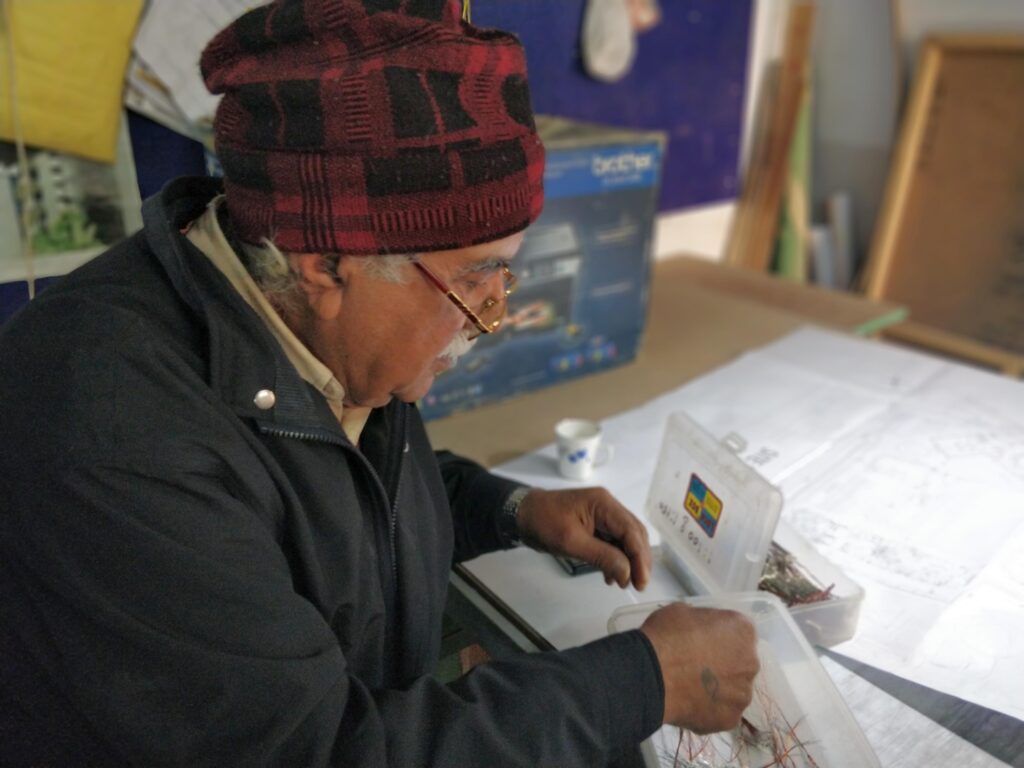
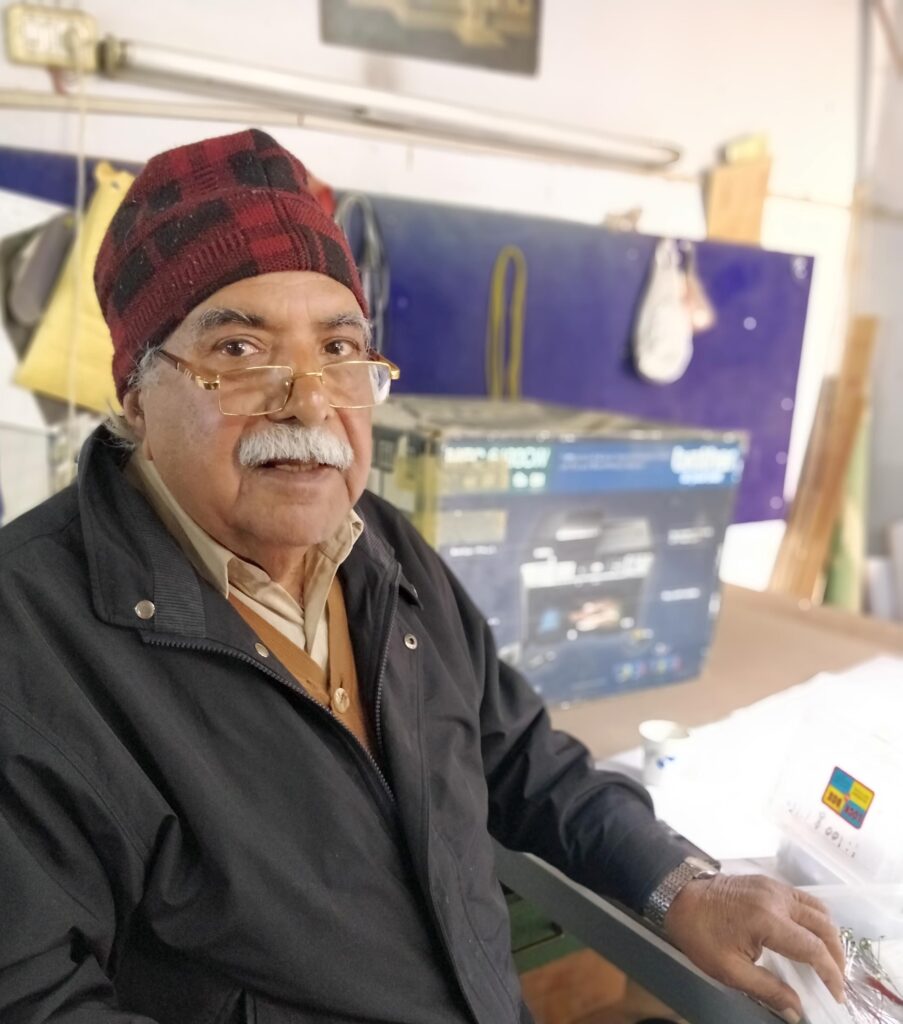
Born in 1943, Kirori Mal hails from the Jangid community. The Jangids have a notable presence in the states of Haryana, Rajasthan and Punjab with carpentry- wood carving and furniture making, in particular, their traditional occupation.
“Kirori is the grandfather of architectural model making in Delhi. It is a craft Rajasthani Carpenters excelled in. I had the occasion to work with him only once, but several times with his shisyas who had set up independent shops. They all acknowledged Kirori as their master.”
– Architect Ashok B. Lall
Atypical to his community, the carpentry and woodwork skills were passed onto Kirori Mal from his ancestors, which along with his interest in mathematics and geometry, established him as an accomplished model maker. His acumen in geometry became an asset, enabling him to work with stalwarts like Achyut Kanvinde and Joseph Allen Stein on architectural masterpieces that defined modernity in India.
Recalling early encounters with Kirori Mal
In 1993, while interning at ARCOP, Anupam Bansal would frequently visit Kirori Mal’s workshop in Anand Parbat with his teammates working on the Jaypee Palace Hotel Project.


Each visit, he recalls, was filled with awe and admiration,
“While Kirori Mal’s eyes would fixate on the model, his hands would continuously be in motion. They would pick up the needed tools without much effort. We watched his hands quickly hop from the hammer to hack saw, to chisel, within a fraction of a second. Only he knew where and how a particular tool was placed. It was like watching a machine in action.”
– Architect Anupam Bansal
“Kirori Mal was amazingly fast. He could almost single-handedly turn out models overnight. He somehow knew just the correct shortcuts to do jobs very fast.”
– Architect Meena Mani
His ability to appreciate and understand architectural details, at times even better than well-experienced architects, would strike one the most. He had become an indispensable part of the design development team for many architectural studios, often solving complex geometrical issues in little time.
In 2017, after nearly 25 years since Anupam’s first meeting with Kirori Mal, his nephew, Ankit, who was engaged as a model maker for a project by ABRD Architects, would proudly share that he acquired his model-making skills from Kirori Mal. For many model makers like him, Kirori Mal was the Guru.
But, Kirori Mal’s own introduction to Architecture and model making was a chance encounter with the School of Planning and Architecture (SPA), Delhi!
Beginning of a career in model making
In 1956, after moving to Delhi, Kirori worked on several small carpentry assignments. He eventually found a job as a senior carpenter at the Indian Standard Institute (ISI), which was in the vicinity of the School of Planning and Architecture, Delhi.
At that time, SPA students were looking for a carpenter who could help them with their models. They came in contact with Kirori Mal, who following some initial hesitation, took it as a challenge to learn and an opportunity to make extra money. To understand the skill better, he would spend his extra time during lunch break observing buildings and understanding architectural drawings.
Soon enough, he was reading drawings and correlating, plans, sections and elevations to visualise 3D models- With each passing day, he became better at understanding architectural drawings.
His association with SPA students and faculty gradually grew, helping him get in contact with professionals- renowned academicians like Prof. Jhabvala and Prof. Bahadur, who would contact him for their professional models as well. Saini Chopra Sehgal Architects at Shankar Market commissioned his first professional model.
Kirori continued with his full-time job at ISI and part-time model-making business for several years, most of the time working double shifts, to satiate his passion and motivation for excellence in architectural model making.



Transitioning into a full-time model maker
By 1976, leading architectural practices of Delhi like Joseph Allen Stein, Kanvinde Rai Chaudhary, and CES were seeking Kirori Mal’s help for their professional work. At this point, he had to choose between a full-time job at ISI or the model-making business- Kirori Mal quit his full-time government job and became a professional model maker, starting from a small workshop in Anand Parbat, Delhi.
“Quitting a government job was unthinkable in those times. My peers and friends advised me to rethink my decision. All my friends and acquaintances warned me against committing this big mistake.”
– Kirori Mal
Equation with the Leading Architects of Delhi
From the 70s to the late 90s, Kirori Mal worked with prestigious architectural firms in Delhi. He most fondly cherishes his association and the personal bond he went on to share with Joseph Allen Stein and A.P.Kanvinde, who found his humility and eye for detail endearing,
“One-time Kanvinde called me to his office and sketched plans and elevations of an Institute in Baroda. He asked me to make a study model from them, that could help him develop the design further. At my workshop, I realised there was some error in his sketch. It was late in the evening and I had to deliver the model the next morning. Time was short, so I imagined the correct drawing on my own and took the model to him the next morning. I was quite scared to point out his mistake, but still holding my breath, I informed him of the incorrect elevation sketch. It surprised him that despite the incorrect sketch, I could visualise the correct elevation and complete the model. Gracefully, he agreed that the drawing was incorrect and complimented me for doing a perfect model.”, Kirori fondly recalls.

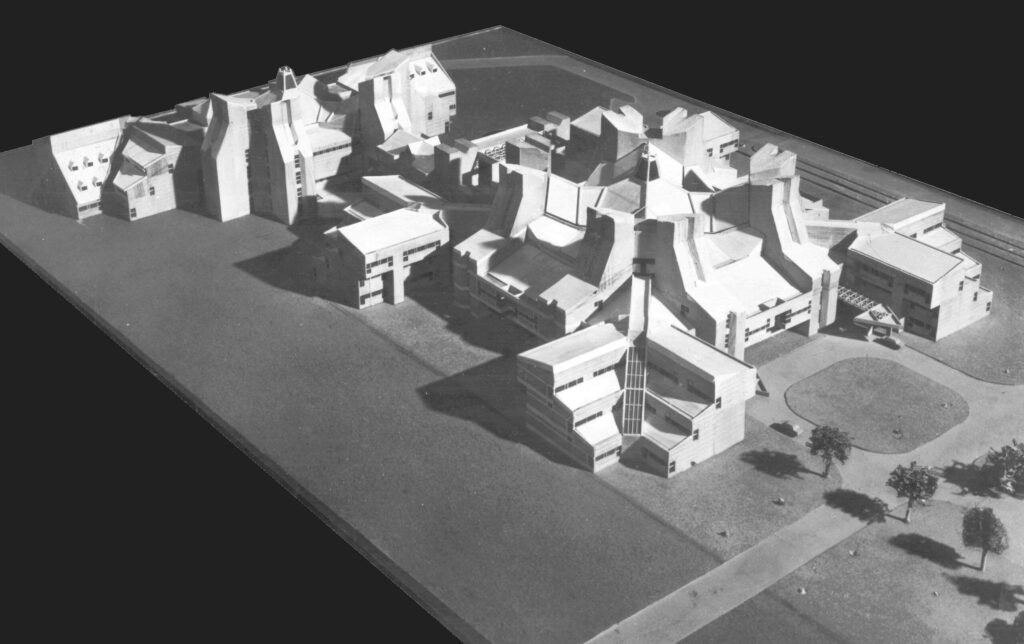

“Kirori Mal was amazingly fast compared to other model makers. He understood Mr Kanvinde’s style quite well, and at times made full-fledged models based on very rough sketches. He would create complete thesis models for students who had barely provided him with incomplete drawings and information.”
– Mr Kanvinde’s son, Architect Sanjay Kanvinde, reminisces
Like Kanvinde, Stein too commissioned Kirori Mal for numerous prestigious projects like Convention Centre in Kashmir, and American Embassy Apartments in Delhi. Kirori always looked up to Stein as his mentor. Stein’s humble nature and the freedom to explore different model-making techniques inspired him. Where language was a barrier- Stein spoke in English while Kirori could only understand Hindi- drawings did the communication. Because of his ability to understand architectural drawings, Stein would involve Kirori from the beginning of the design process.
But, at one point, Kirori quit working for Stein. He recalls, “No matter how much I tried while cutting windows with a thin blade, the cut marks would invariably extend beyond the windows. Mr Stein’s colleague refused to accept the model. I explained to him that due to the model’s scale and the limitation of tools, the marks were unavoidable. I failed to convince him. I was so upset with his behaviour that I quit making models for Stein’s office.”
However, Kirori was soon called back by Mr Bhalla and after some cajoling, was back to working for Stein on the same project. “When I completed the model with some improvements in finishing, Mr Stein complimented me for the job well done. He talked about my work openly with other architects.”
“Wood was my favourite material, I immensely enjoyed working with it.”
Kirori Mal soon got over-occupied with all sorts of architectural models – from academic to study and detailed models for professionals. He shares, “We used to make models for Consulting Engineering Services (CES), C.P. Kukreja, Kanvinde Rai Chaudhary, and Stein. Those days models were very detailed with elements like railing in wood less than 1mm x 1mm, sometimes. We had to be extremely careful and focused. Wooden models required high skills in craftsmanship.”
Whiskey, complex geometry and architectural learnings
Kirori Mal fondly recollects another interesting learning experience, “A French Contractor who was working on building a mosque in Turkey approached me for help with understanding the design of the main prayer hall. It was a simple rectangular room with a complex domical roof, which they weren’t able to visualize correctly to estimate the construction cost. We spent 3-4 hours in their office in Shahpur Jat. They asked me to create a prototype in just one day.”
“I had not worked on such a thing before. It was a very complex shape. The dome’s geometry made me restless, as I too couldn’t figure it out entirely. Often these kinds of problems would linger in my mind through the night, and I would turn to whiskey for solutions. That night too, a couple of drinks later, I could figure out the geometry and method to make the prototype. The next morning, I started working on the prototype. I delivered the model by evening. The French contractor informed me that the arch was commonly known as the Squinch Arch in Architectural Parlance”.
– Kirori Mal
After having worked on several such architectural models with varying complexities and weeks spent with architectural practices, Kirori Mal became the sought-after person for models; to the point that if he believed the model couldn’t be made, architects would reconsider their designs entirely.



He recalls an incident with Architect Sahni where he couldn’t resolve the geometry of a building through a model, “I spent days trying to figure it out, but something was just not right with the design, and it kept bothering me. Finally, I gathered my courage and explained to him that the drawings weren’t correct and something was amiss with geometry. On my advice, he immediately concluded that if I cannot make the model, it is not practically possible to make the building out of it.”
The change in the art of model making
“I have chosen the road less travelled and struggled to lift myself in this self-taught profession.”
At 79, Kirori Mal continues to accept new assignments, prefers working alone, and maintains a child-like enthusiasm for every new project. The walls of his workshop, in addition to sporting all kinds of custom miniature tools for model making, also display a black-white picture of a Jama Masjid model.
“I was given a sketched plan. There were no drawings for Jama Masjid. I just went around it a couple of times on my motorcycle and memorized every detail in my mind. With a mental map, I was able to construct the entire model. Given the chance, I would have also made an excellent model of the Taj Mahal.”
– Kirori Mal

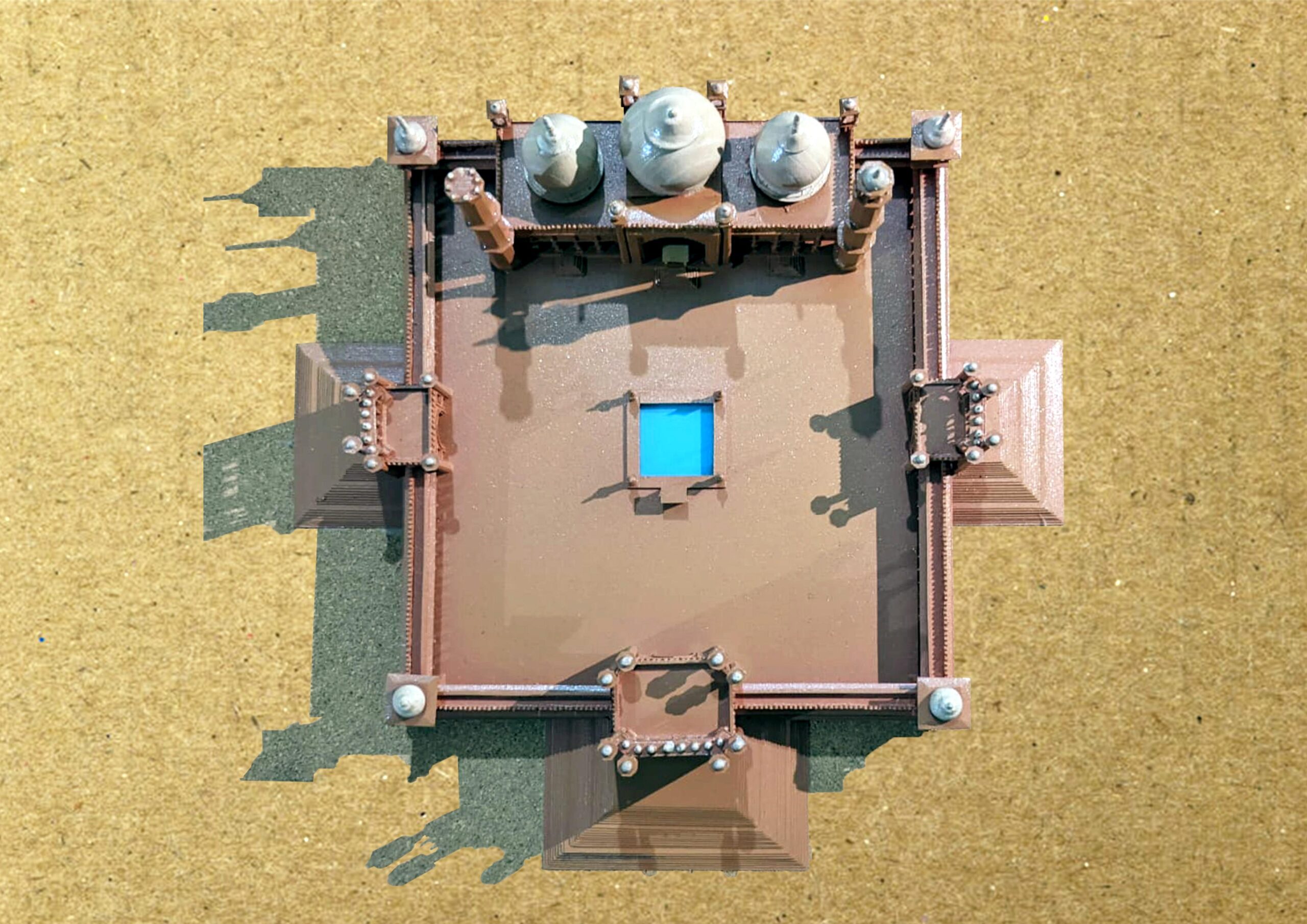
Over a period of five decades, Kirori Mal has seen a change in architectural practice and model-making in terms of quality, materiality and craftsmanship. Laser cut and Plastic models have taken over wooden, handmade models, “Machines can work on our behalf, but they can never resolve the geometry on their own. It has become commercial now, and even architects hardly respect real craftsmanship. Everyone goes for a shortcut and fast delivery, compromising with the quality.”
He feels that, in this technology-driven age, today’s generation lacks patience and an eye for detail. He prefers working alone because he considers finding the right talent who can work with patience difficult, “There are no shortcuts to perfect learning. If you want to be happy and satisfied with what you do, immerse yourself completely into something you like; you will be able to find your way through.”
Today, the art of physical model-making is slowly losing its relevance. Architects have also admitted to technology taking over manual craftsmanship. As Architect Sanjay Kanvinde shares, “Mr Kanvinde (his father Achyut Kanvinde) would prefer working around the whole building with models and resolving junctions etc. Today’s context is changed because of software dependency, making the art of model-making irrelevant. We still feel much more satisfied when we have a physical model in front of us. We have kind of not given up that practice yet. But a lot of practices don’t do models now. The craft has now depleted in a sense. You don’t get the correct craftsman for the job.”
Interviewing Kirori Mal took us back to a time when behind every successful built project, there were several models that were discarded, refined, and reworked at every design stage. It reminded us that architecture is a multifaceted profession, constituting individuals and contributors that extend beyond the formally trained Architect. The extensive design process behind each project involves the contribution of several invisible team members who get overshadowed by the ‘publicly visible’ Architect. This article is a tribute to one such man and several other Kirori Mals, whose contribution often goes unnoticed but who through their skills continue making the built possible.
Credits – Anupam Bansal, Rajesh Advani, Shreedevi, Priya Anandani, Megha Pande
Acknowledgement – Ashok Lall, Meena Mani, Sanjay Kanvinde

